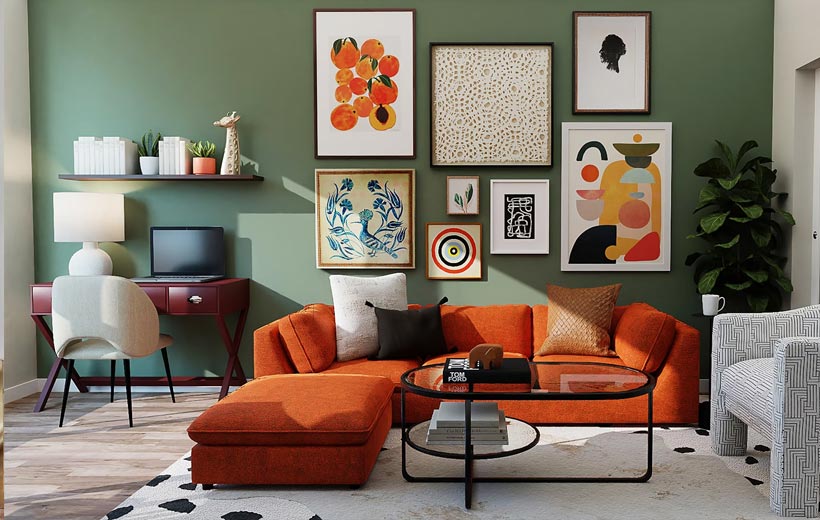Your home is a canvas, and the colors you choose to adorn it with can significantly impact the overall ambiance and aesthetic. Crafting a cohesive color story throughout your home creates a sense of unity and harmony, making each room flow seamlessly into the next. Here are some tips to help you build consistency and create a visually pleasing color story in your living spaces.
- Start with a foundation: Begin by selecting a neutral color as the foundation for your color story. Neutrals like whites, grays, or beiges serve as a versatile backdrop, allowing you to introduce bolder colors later on. This neutral base provides a sense of continuity and makes it easier to transition from one room to another.
- Choose a dominant color: Select a dominant color that will play a significant role in each room. This doesn’t mean every room has to be painted in the exact same shade, but incorporating variations of the dominant color will tie the spaces together. For example, if you choose a calming blue as your dominant color, use different shades of blue in various rooms to maintain consistency.
- Establish an accent color palette: Introduce a carefully curated palette of accent colors that complement your dominant color. These can be used for furnishings, decor items, or smaller architectural details. By limiting the number of accent colors, you create a sense of cohesion without overwhelming the visual experience.
- Consider flow and transition: As you move from room to room, think about the visual flow. Ensure a smooth transition by incorporating elements that bridge the spaces. This could be achieved through the use of transitional colors or by repeating accent colors in adjoining rooms. The goal is to avoid abrupt changes that might disrupt the overall harmony of your color story.
- Embrace different tones: Variety doesn’t have to mean inconsistency. Embrace different tones and shades within your chosen color palette. This adds depth and visual interest without deviating from the overall theme. For instance, if you opt for a warm, earthy color scheme, mix light and dark tones to create a balanced and inviting atmosphere.
- Use textures to enhance visual interest: Incorporate a variety of textures to enhance the richness of your color story. This can be achieved through textiles, furniture finishes, and other decor elements. Textures add a tactile dimension to the visual experience, making your home feel more layered and thoughtfully designed.
- Test before committing: Before committing to a color scheme, test your chosen colors in different lighting conditions. Natural and artificial light can influence how colors appear, and it’s essential to ensure that your chosen palette looks cohesive in all lighting scenarios.
- Personalize with purpose: While it’s crucial to maintain consistency, don’t be afraid to infuse your personality into the color story. Personal touches, such as artwork, family heirlooms, or vibrant accent pieces, can add character without disrupting the overall cohesion.
Crafting a color story for your home is an exciting and creative process. By establishing a foundation, selecting a dominant color, and carefully curating accent colors, you can build consistency throughout your living spaces, creating a home that feels cohesive, inviting, and uniquely yours.



